LumenRadio CRMX Galileo TX Handleiding
LumenRadio
Controller
CRMX Galileo TX
Bekijk gratis de handleiding van LumenRadio CRMX Galileo TX (2 pagina’s), behorend tot de categorie Controller. Deze gids werd als nuttig beoordeeld door 49 mensen en kreeg gemiddeld 4.5 sterren uit 25 reviews. Heb je een vraag over LumenRadio CRMX Galileo TX of wil je andere gebruikers van dit product iets vragen? Stel een vraag
Pagina 1/2

MANUAL LUMENRADIO CRMX Galileo
Copyright © LumenRadio AB 2023, All Rights Reserved www.lumenradio.com
APPLICATION AREA
The CRMX Galileo is a wireless lighting control product. It is designed to be used
indoors, or outdoors when installed in a IP65 rated environmental enclosure.
CRMX Galileo replaces the cable in DMX-512A systems. It can be used together
with any CRMX compatible device using either CRMX Classic or CRMX
2 modes.
CRMX Galileo can also be congured to operate in W-DMX mode where it can
operate together with W-DMX compatible devices.
GENERAL
All personnel must acquaint themselves with the instructions in this leaet before
using this product. This product must not be used if damaged. For additional
documentation for CRMX Galileo, scan the QR code on this leaet, or visit
www.lumenradio.com.
WARRANTY
All warranty claims for this product shall be directed to the local distributor/reseller.
Warranty is deemed void if:
(1) The product is modied, repaired or otherwise altered unless it has been
directed by LumenRadio AB; or
(2) The serial number on the product (the QR code) has been compromised.
SYSTEM OVERVIEW
A CRMX system replaces the need to use expensive and cumbersome DMX ca-
bles. Place one Galileo TX unit in close proximity to the lighting controller and
let it wirelessly transmit the DMX and RDM data to Galileo RX units, or other
CRMX receivers – for instance built-in receivers in wireless-ready xtures from any
of LumenRadio’s partners.
DMX data can locally be daisy chained with cable between xtures that are phy-
sically close to each other.
If range needs to be extended it is possible to operate a Galileo RX unit as
a repeater (available as an optional upgrade). A repeater receives the wireless
signal and retransmits it for receivers that otherwise would be out of range. A
repeater will also output the DMX and RDM data locally on it’s data port – just like
any receiver would do.
SAFETY
Only qualied electricians or service personnel trained by LumenRadio may
perform installations with this product. Always follow local electrical code and
regulations.
If installed using a 24 VAC isolation transformer, this must be performed in accor-
dance with IEC 61558-1.
Do not use the product if the product is damaged. Only use cables within the spe-
cied conductor sizes. This product may not be connected directly to main power.
INSTALLATION
1. Verify that the product has no physical damage.
2. Clip the unit onto a DIN rail. If installed outdoors, this must be performed in a
IP65 rated environmental enclosure.
3. Mount the antenna, or of installed in an enclosure – mount the antenna
coax cable.
4. Connect the power supply in accordance with specied voltage.
5. Connect the DMX cable to the DMX interface.
6. Power on and verify that the unit is powered up correctly – Galileo units
performs a chase with white color on the three front LEDs at power-on to
make it clearly visible that it is starting up.
BOX CONTENT
1 pc. CRMX Galileo unit 1 pc. RP-SMA antenna
1 pc. 2pin terminal plug for power 1 pc. 3pin terminal plug for data
1 pc. Quick start instruction (this leaet)
SPECIFICATIONS
Power supply AC: 24 VAC +/- 10% 50/60 Hz
Power supply DC: 12-24 VDC +/- 10%
Max. power consumption: 2.5W
Self-healing fuse: Yes
Rated wire size: 0.2 – 1.5 mm2
24 – 16 AWG
IP rating: IP X0
Dimensions (W x H x D): 36.5 x 93 x 58.7 [mm]
Weight: 85 g
Antenna connector: RP-SMA
Operating temp. range: -20 to +55 °C
Storage temp. range: -30 to +80 °C
Humidity: 0 – 90% non-condensing
Frequency range: 2402 – 2480 MHz (ISM band)
Max. RF output power: 100 mW (280 mW in US)
Supported protocols: DMX-512A, RDM
Supported RF protocols (TX): CRMX, W-DMX G3 & G4S
Supported RF protocols (RX): CRMX, CRMX
2, W-DMX G3, G4,
G4S & G5
LEGAL
CRMX is a trademark of LumenRadio AB, W-DMX is a trademark of Wireless
Solution Sweden AB.
Wireless Solution Sweden AB is a fully-owned subsidiary of LumenRadio AB.
DMX-512A and RDM refers to ANSI national standards developed and maintai-
ned by ESTA, Entertainment Services and Technology Association.
This product makes use of US patents 7,432,803; 8,457,023; 9,208,680; EU
patents EP 2415317, EP 2803248, China patents CN 102369774, CN 104041189B
and others.
Version of this quick start guide: Version 2 (2023-10-17)
MANUFACTURER
LumenRadio AB LumenRadio
Johan Willins gata 6 Alfred-Herrhausen-Allee 3-5
416 64 Gothenburg DE-65760 Eschborn
Sweden Germany
www.lumenradio.com
Scan for additional
information
FCC ID: XRSTIMOMWAN301
IC ID: 8879A-TIMOMWAN301
E115504
UL62368-1
CSA C22.2 No. 62368-1
CRMX Galileo
by LumenRadio

MANUAL LUMENRADIO CRMX Galileo
Copyright © LumenRadio AB 2023, All Rights Reserved www.lumenradio.com
YOUR GALILEO UNIT
LINK SWITCH FUNCTIONS
The link switch performs the basic link and unlink functions, but combinations of
presses can perform some special functions. All functions are listed in the tables
below. In the tables below short press is <0.5 s, long press is >3 s.
BASIC FUNCTIONS
Short On transmitter: Link available receivers
On receiver: No function
On repeater: Link available receivers
Long On transmitter: Unlink all receivers
On receiver: Unlink this receiver
On repeater: Unlink all receivers, or unlink this repeater
if pressed again within 5 seconds after unlink process.
SPECIAL FUNCTIONS
The special functions are accessed by pressing the button momentarily a number
of times, followed by a long press (> 3 s).
2 x short + long Enable/disable BLE.
3 x short + long Galileo TX: Select RF protocol.
5 x short + long Galileo RX: Enable/disable repeater (if option is installed)
7 x short + long Reset BLE PIN code.
STATUS LEDS
MODE SIGNAL (TX)
Transmitter Transmitting
Receiver Linking receivers
Repeater Unlinking receivers
BLE enabled
BLE connected SIGNAL (RX)
> 70%
30 – 70%
DATA < 30%
DMX data No link
RDM activity Not linked
IDENTIFY
When connecting via BLE using the CRMX Tooolbox app, or when using RDM, it
is possible to identify a device to know what device is accessed. When doing this,
all LEDs will ash rapidly.
LINKING
To be able to transmit data through the system, receivers needs to be linked to
the appropriate transmitter, or repeater.
1. Make sure the receivers are unlinked and that they are withing communica-
tion range.
2. If receiver is already linked, follow the steps in the unlink section.
3. Press the link switch momentarily on the transmitter.
4. Wait for the linking process to nish.
UNLINKING
Unlinking can be done directly from the transmitter, which will unlink all currently
powered receivers that are within range that is linked to this transmitter. This is
done by holding the link switch for >3 s.
Unlinking can also be done on one specic receiver by holding its link switch
pressed for >3 s.
USING REPEATERS
When the range needs to be expanded, a receiver can be upgraded to
repeaters (software license required). Before a repeater can be linked to receivers
it rst need to be linked to a transmitter.
To unlink a repeater from a transmitter, its receivers rst needs to be unlinked. Re-
peating the unlink step within 5 seconds after the unlinking process has nished
will unlink the repeater from its transmitter.
RDM (REMOTE DEVICE MANAGEMENT)
Galileo supports RDM both as transmitter and receiver (including repeater mode).
This enables conguration of RDM capable xtures, allowing DMX start address
and DMX personality to be set among other things. It also allows for monitoring
the system, such as detecting if devices goes ofine, monitor receivers’ signal
levels, and much more.
Available RDM functions varies depending on the controller and the xtures.
A Galileo TX incorporates an RDM Proxy that needs to be enabled before any
downstream devices can be discovered. This can be done either by changing the
DMX personality of the transmitter, via the link switch button, or from the CRMX
Toolbox app.
BLUETOOTH
Bluetooth, or BLE, is enabled by default. It is recommended to disable the BLE
interface after installation has been completed, or to protect the BLE interface
by setting a PIN code.
It is possible to send DMX data to the Galileo device via BLE. There are several
apps that supports this that can be downloaded from App Store. When sending
DMX data to a receiver or a repeater, the DMX data is only forwarded to the local
DMX interface. But when DMX data is sent via BLE to a transmitter device, the
DMX data will be sent to the entire network.
DMX via BLE is limited in performance due to the limitations of BLE, and is not
suitable for fast effects.
FIRMWARE UPDATES
The software in your Galileo device, called rmware, is continuously improved
and new functions may be added. It is therefore recommended to make sure you
keep the devices up to date. In all cases, make sure you have the latest rmware
installed before commissioning a new system.
Firmware can be updated via Bluetooth using the CRMX Toolbox
2 app. The latest
rmware is automatically downloaded from LumenRadio’s cloud and pushed to
your device when you initiate an update.
INSTALLING REPEATER OPTION
Galileo RX units can have an optional repeater option installed. It is installed
using the CRMX Toolbox app and requires you to have an account registered
through the app. To purchase this option, reach out to your local reseller.
CRMX TOOLBOX2
CRMX Toolbox2 is an app available from LumenRadio to congure CRMX de-
vices. It is available for iOS and Android and can be downloaded directly from
Apple App Store or Google Play Store.
Power in
Status LEDs
DMX port
Antenna connector
Link switch
- +
Gnd D- D+
Product specificaties
| Merk: | LumenRadio |
| Categorie: | Controller |
| Model: | CRMX Galileo TX |
Heb je hulp nodig?
Als je hulp nodig hebt met LumenRadio CRMX Galileo TX stel dan hieronder een vraag en andere gebruikers zullen je antwoorden
Handleiding Controller LumenRadio
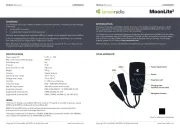
27 Juni 2025

19 Maart 2024

19 Maart 2024

19 Maart 2024

19 Maart 2024

19 Maart 2024

19 Maart 2024

19 Maart 2024

19 Maart 2024

19 Maart 2024
Handleiding Controller
- Hikvision
- Esperanza
- Re.corder
- Schaudt
- Premier Mounts
- Gioteck
- Gembird
- Denon
- Venom
- Bogen
- Carat
- Allen & Heath
- Rachio
- HID Identity
- DJI
Nieuwste handleidingen voor Controller

5 Augustus 2025
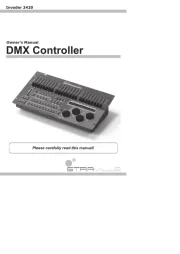
5 Augustus 2025
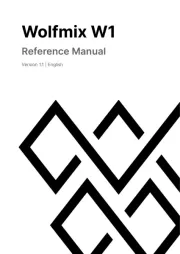
4 Augustus 2025
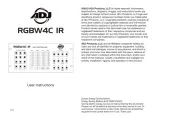
4 Augustus 2025
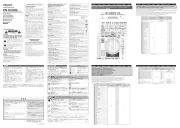
4 Augustus 2025
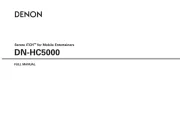
29 Juli 2025
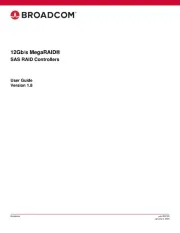
29 Juli 2025
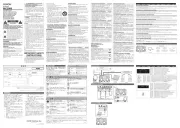
29 Juli 2025
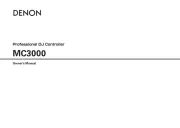
29 Juli 2025
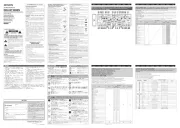
29 Juli 2025